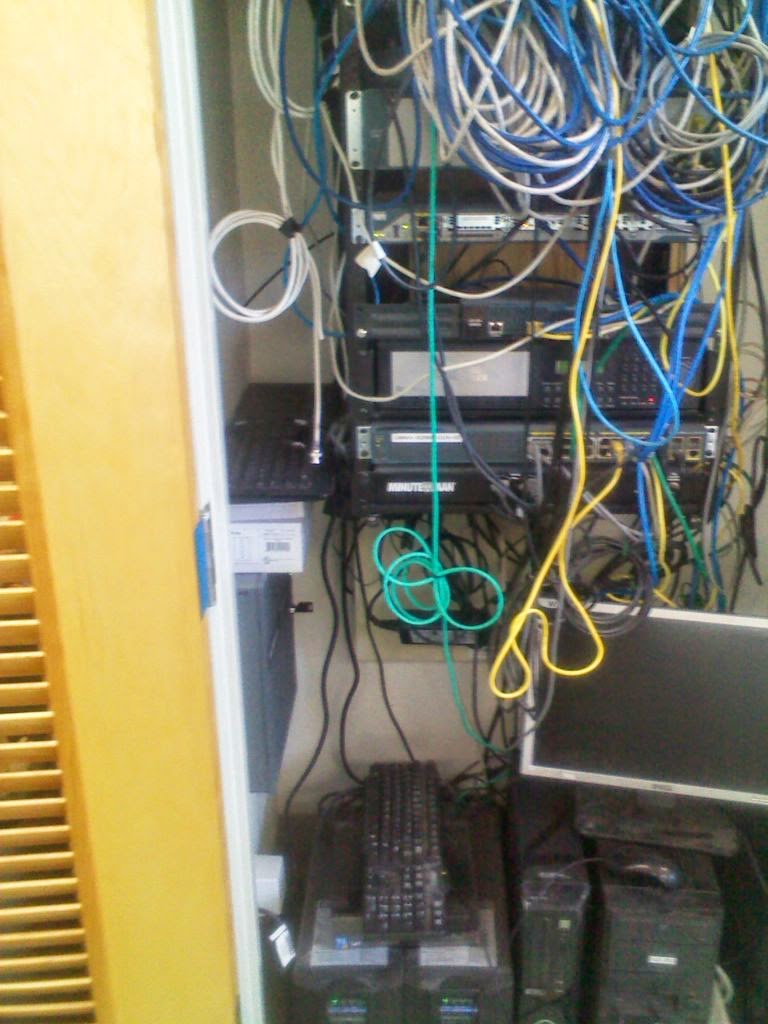


This is not how a network server closet should look, note that there is a platform at the bottom holding up the servers and UPS units (prior to this picture, the clinic suffered a flood from a burst pipe, luckily the water didn't rise up to destroy the units on the floor, so we put this in there temporarily). After meeting with the Director, we suggested that they put all of the servers and peripherals inside of an a/c cooled cabinet. The cabinet was provided by Liebert systems, model Liebert MCR 22U Model. But before we get to the good part, lets take you through the process from start to finish how we made this happen.
First the closet was too small for the smallest Liebert model to fit into. So we needed to expand the closet 13 inches in width and about 12 inches in depth. We first removed all components from the closet and then we hired a demolition team to get this going, see below:













Now that the closet was totally tore out, the demo crew got busy on the framework, the drywall and the movement of all electrical items (such as the alarm system, card reader components and cctv dvr unit). Once those were repositioned or moved out temporarily, the new closet build begins:


While the crew was busy tearing down and building up, Alan and I started to put the Liebert unit together. Since this was going to be a clean air enclosed unit, putting the components into the unit in the as is condition that they were in, was not going to fly. So we painstakingly took each component apart and, using compressed canned air, blew out all the dust and particles that were built up in each one. Remember that this network has been in this closet for over 8 years.
You can imagine the buildup of dust and debris that was in each component. Putting them inside the Liebert rack was going to cause the filters to be ruined immediately as they need to be changed every 3-6 months depending on the load of dust accumulation.
To be continued in next blog.............
To be continued in next blog.............














